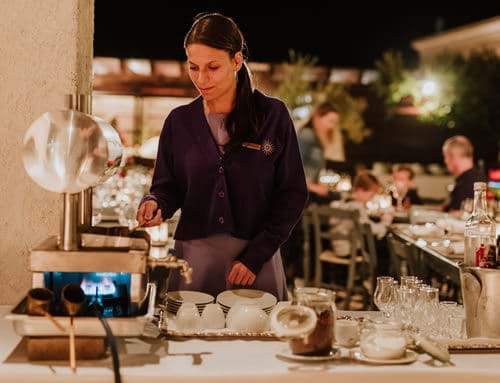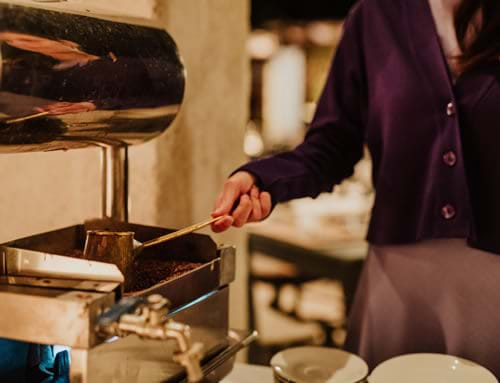A cup of traditional Cyprus coffee is made using time-honoured techniques and equipment. The coffee itself is a blend of about 80% arabica beans topped off with robusta beans (this mixture is found to be lighter and more fragrant than Turkish coffee, which is made entirely with arabica beans). The beans are first ground to a fine powder. A teaspoon of the ground coffee is then placed in a mbriki, a broad-bottomed copper pot with sides tapering to a narrow top. Sugar is added as the order requires—a sketto has no sugar, a metrio includes one teaspoon of sugar, and a glyki has two. Water is also added. Many Cypriots insist that cold water must be used, as slow cooking releases the best flavour. The pot is heated on the oushaki, a stove that uses an open flame to heat a bed of sand. The long-handled mbriki is nestled into the sand for a few minutes of brewing. An experienced cook will be able to detect the exact moment when the coffee is ready: a poured cup should have grounds on the bottom and a foamy top. Cyprus coffee is usually enjoyed with a glass of cold still water. Historically, village men gathered in the kafenio to enjoy their coffees, while women gathered in homes for the same purpose. Some women claim the ability to tell fortunes by looking at the patterns of the grounds in a finished cup. Visit the Cyprus coffee station during Anassa’s Village Square dinner to witness the entire cooking process.

